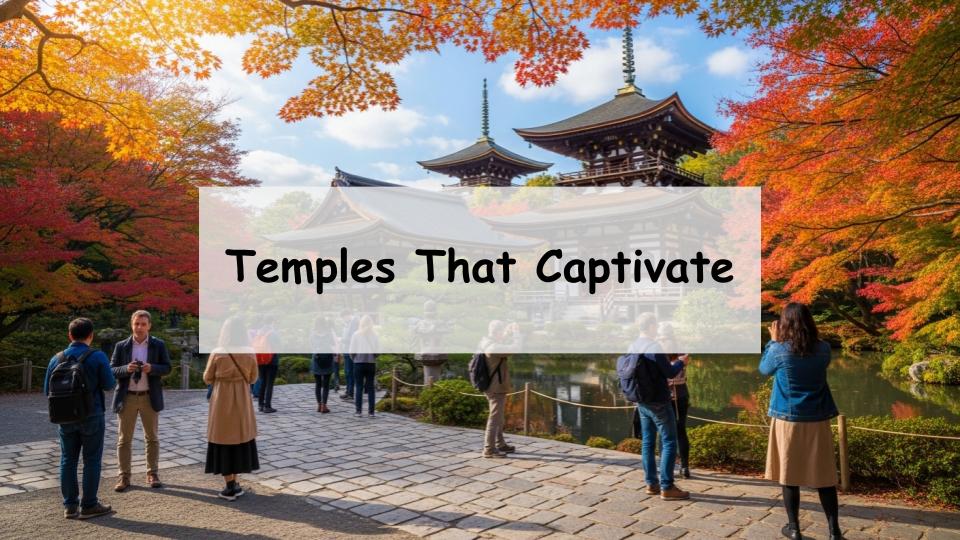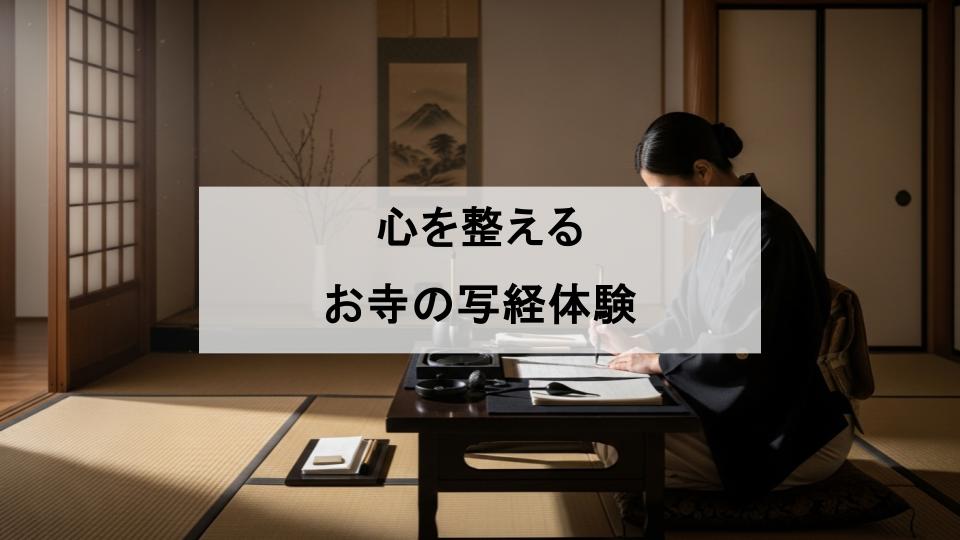“Which temples are foreign tourists visiting in Japan these days?”
If you’ve asked yourself this question, you’re not alone. With the rise of social media and travel blogs, it’s clear that many foreign tourists are deeply interested in Japan’s temple culture. Traditional Buddhist temples offer unique cultural experiences, and several iconic spots are seeing increasing foot traffic from overseas visitors.
In this article, we’ll explore why these temples attract so much attention and introduce 7 of the most popular temples among foreign tourists. By the end, you’ll understand the reasons behind their popularity and perhaps discover your next travel destination in Japan.
- What Makes Temples Popular Among Foreign Tourists?
- 7 Temples Foreign Tourists Love to Visit (By Area)
- Common Traits Among Temples Popular with Foreign Tourists
- How Foreign Tourists Choose Temples in Japan
- Up-and-Coming Hidden Gem Temples
- Temple Etiquette and Tips for Foreign Visitors
- A Message from the Guide
What Makes Temples Popular Among Foreign Tourists?
Why Temples Appeal to Foreign Visitors
Japanese temples offer more than just religious functions—they’re places of calm, spiritual reflection, and architectural beauty. Many foreign tourists, especially from Asia and Western countries, are drawn to temples as a way to experience traditional Japanese culture firsthand.
Characteristics of Temples Featured in Travel Guides
Temples that appear frequently in travel guides often share a few characteristics: rich historical backgrounds, excellent accessibility, multilingual signage, and scenic architecture that looks great in photos. These features make them easy choices for international travelers.
Temples as a Cultural Experience Rather Than Religious Practice
For many foreign tourists, visiting a temple is not about religious devotion but about experiencing a different culture. Activities like bowing, praying, and participating in temple rituals are approached as opportunities for cultural enrichment and personal reflection.
7 Temples Foreign Tourists Love to Visit (By Area)
Tokyo: Sensō-ji
Located in the heart of Tokyo, Sensō-ji is one of the most visited temples by foreign tourists. Its iconic Kaminarimon gate and bustling Nakamise shopping street make it both a cultural and shopping destination.
Kyoto: Kiyomizu-dera
Famous for its large wooden stage and panoramic views of Kyoto, Kiyomizu-dera is a must-visit. Its seasonal beauty—from cherry blossoms to autumn leaves—attracts visitors year-round.
Kyoto: Kinkaku-ji
Known as the Golden Pavilion, Kinkaku-ji is covered in gold leaf and surrounded by a stunning pond garden. Its eye-catching beauty makes it one of the most photographed temples in Japan.
Nara: Tōdai-ji
Home to the Great Buddha statue, Tōdai-ji is a UNESCO World Heritage Site and a major tourist attraction in Nara. The combination of ancient history and friendly deer in the nearby park makes it especially memorable.
Kamakura: Kōtoku-in (Great Buddha)
Just an hour from Tokyo, the Great Buddha of Kamakura at Kōtoku-in is a popular day-trip destination. Tourists can even enter inside the Buddha statue for a unique experience.
Kobe: Sumadera
Sumadera is a serene temple in Kobe that offers both historical significance and peaceful surroundings. It’s increasingly popular among repeat travelers and those looking to escape the crowds.
Nagano: Zenko-ji
Zenko-ji in Nagano is open to all visitors, regardless of religious affiliation, and is known for its inclusive spirit. The atmospheric temple grounds and charming shopping streets nearby add to its appeal.
Common Traits Among Temples Popular with Foreign Tourists
Historically Significant and Easy to Access
Temples that are conveniently located in major cities or near transportation hubs tend to attract more visitors. Historical depth and cultural significance are also major draws.
Photogenic Spots and “Instagrammable” Views
Temples with impressive architecture, seasonal landscapes, or unique features are more likely to be shared on social media, boosting their visibility and appeal to international travelers.
Multilingual Support and Tourist-Friendly Services
Temples that offer English or multilingual signs, brochures, and guided tours make foreign visitors feel more welcome. These services often lead to better overall experiences and positive reviews.
How Foreign Tourists Choose Temples in Japan
What Experiences Are They Seeking?
Many tourists look for authentic cultural experiences—something different from their daily lives. Temples offer peace, beauty, and introspective moments that satisfy this desire.
Differences in Popularity by Region (Western vs. Asian Tourists)
Western tourists often show interest in architecture, history, and philosophy, while many Asian visitors appreciate the spiritual connection and familiarity with Buddhist culture. Preferences vary by region.
Influence of Review Sites and Social Media
Platforms like TripAdvisor, Google Reviews, and Instagram heavily influence destination choices. Positive reviews and eye-catching images can drive tourist traffic to lesser-known temples as well.
Up-and-Coming Hidden Gem Temples
Cultural Experience Temples in Rural Areas
For foreign travelers seeking peaceful experiences away from city bustle, rural temples offering cultural and spiritual programs are gaining popularity. For example, Eiheiji Temple in Fukui Prefecture, a major Soto Zen monastery, is well-known for its Zen meditation and training experiences, making it a sought-after spiritual retreat. Similarly, Kongobu-ji Temple on Mount Koya in Wakayama Prefecture offers extensive programs such as sutra copying and Zen meditation, attracting more foreign visitors interested in authentic temple practices.
Temples for Travelers Seeking Quiet and Healing
Temples located in tranquil natural settings appeal to travelers wanting to relax and find peace. Eigenji Temple in Shiga Prefecture is famous for its beautiful autumn foliage and serene surroundings. Likewise, Zuiganji Temple in Miyagi Prefecture, nestled in the scenic Matsushima area, provides a calm and soothing atmosphere favored by visitors seeking spiritual rest.
Underrated Temples Off the Beaten Path
Temples less frequented by tourists offer deeper cultural immersion. Ankokuji Temple in Kumamoto Prefecture is gaining attention as a hidden gem where visitors can experience local history and traditions. In Nagano Prefecture, Saimei-ji Temple is known for its stunning fall colors yet remains relatively quiet, cherished by locals and those wanting a more authentic experience. These hidden temples, often supported by local tourism initiatives, are expected to become important new destinations for inbound travelers.
Temple Etiquette and Tips for Foreign Visitors
Photography, Dress Code, and Basic Manners
Respect temple rules such as no flash photography inside the halls, wearing modest clothing, and keeping voices low. Reading posted signs can help avoid unintentional disrespect.
Cultural Sensitivity and Respect
Even if you’re visiting as a tourist, temples are sacred spaces for many. Be mindful of rituals and practices, and show respect during your visit.
How to Avoid Common Mistakes
Language barriers and cultural differences can lead to confusion. When in doubt, ask staff or observe others to ensure you’re following proper etiquette.
A Message from the Guide

All the temples introduced here were full of foreign tourists, and I’m really happy that they are interested in the temples.

















Comment